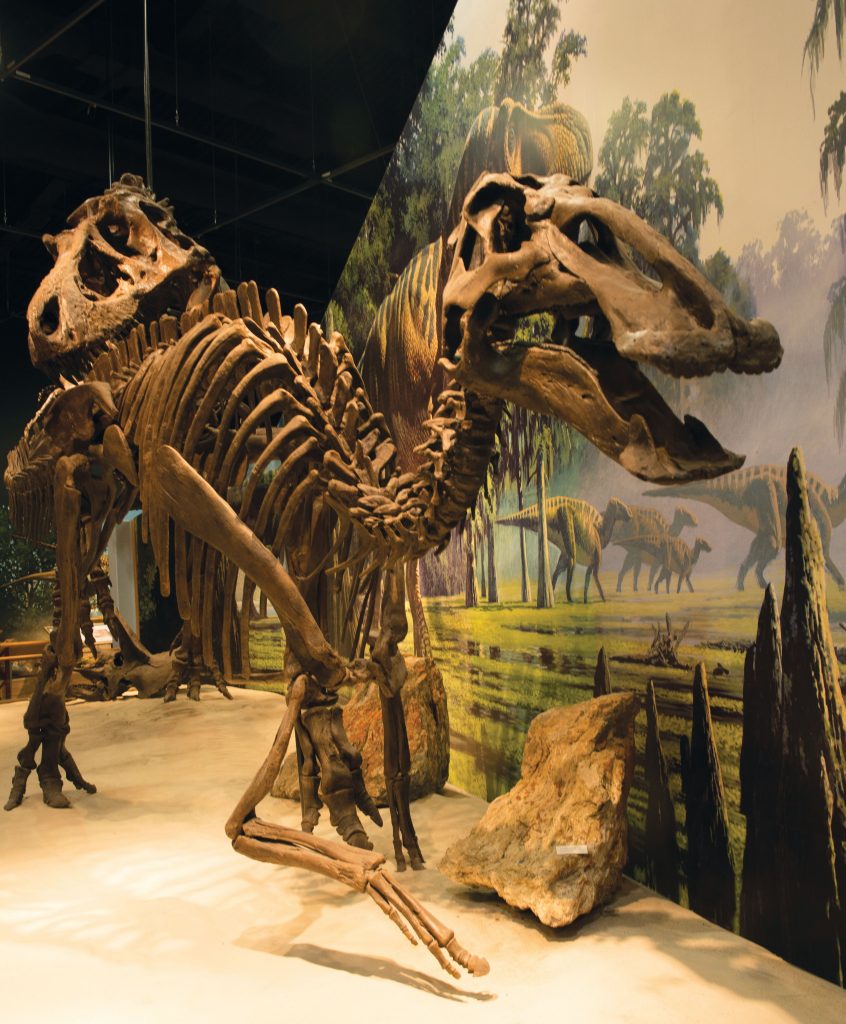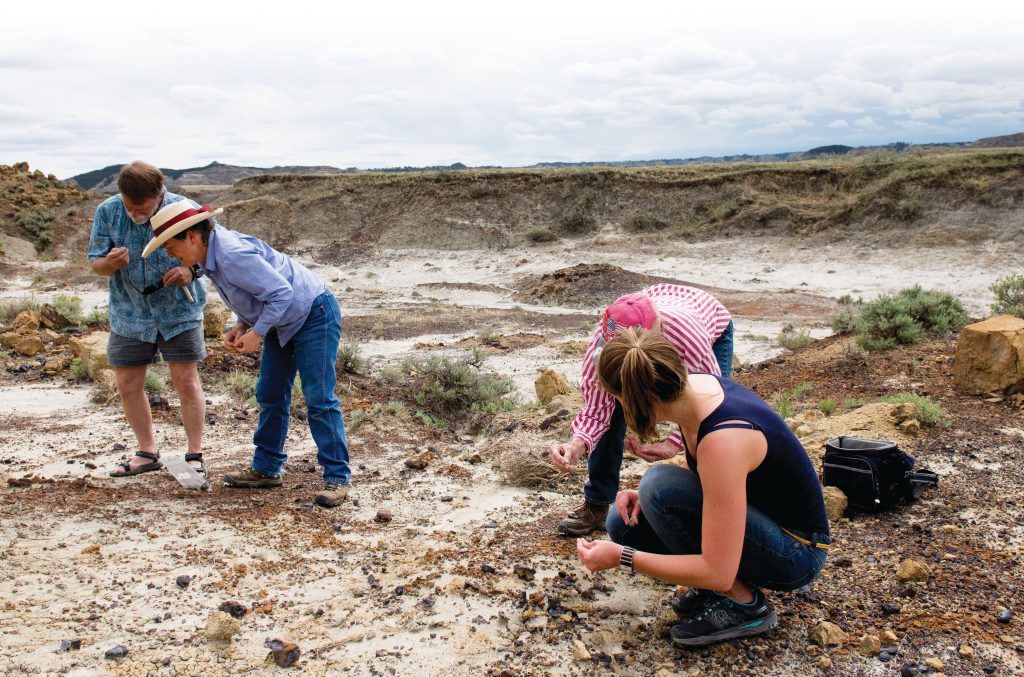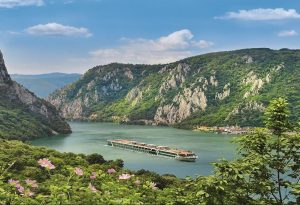The Montana Dinosaur Trail reveals the prehistoric life of these behemoths in dinosaur fossil museums and outdoor paleontological activities.
Why is Montana a hotbed for Dinosaur Fossils?
Montana boasts some of the most important discoveries of dinosaur specimens worldwide, and the state is also home to some of the most renowned paleontologists around. The Montana Dinosaur Trail traverses the state’s landscapes, from rugged mountain peaks in the west to sweeping plains in the east. These characteristics have provided the ideal conditions for finding exceptional dinosaur fossils.
The folding and shifting that produced Montana’s varied terrain exposed rock formations from nearly every geologic era. This includes the Cretaceous and Jurassic periods when dinosaurs roamed the earth. These rock formations are at the surface, often in dry, rocky “badland” environments with little vegetation and topsoil to cover the fossils. This makes it possible for people—paleontologists, ranchers, farmers, and hikers—to discover the plethora of dinosaur fossils. And because Montana is sparsely populated, sites haven’t been disturbed or covered by heavy development, which helps to preserve and expose magnificent bones.

Fort Peck Interpretive Center and Museum (Photo credit: Montana Office of Tourism)
There are 13 museums and one state park that make up the Montana Dinosaur Trail. They shed light on this aspect of prehistory, showcasing fossilized dinosaur bones and, in some cases, complete skeletons. These locations can be found across the state, with most in the northern half. Two of these museums offer the opportunity to help scientists dig for dinosaur fossils and uncover more facts.
Montana Dinosaur Trail Museums
Dinosaur Fossil Museums in Malta
Along the Montana Dinosaur Trail, the Great Plains Dinosaur Museum and Field Station in Malta is located in the heart of “dinosaur country.” It features a cast of “Leonardo,” recognized by the Guinness Book of World Records as the best-preserved dinosaur in the world. The ‘mummy” Brachylophosaurus was discovered in 2001, with most of its body covered in skin. On paleontology digs conducted on select summer dates, guests can work with scientists to collect dinosaur fossils that may go on display or be the research focus.
The Phillips County Museum is just down the road from the Great Plains Dinosaur Museum. Visitors can meet “Elvis,” a 33-foot-long Brachylophosaurus dinosaur fossil, one of the best-articulated skeletons ever found. It was named for the rock ’n’ roll legend because its hip was found first. A 28-foot-long, full-size Albertosaurus, a relative of the T. rex, greets arriving guests. Enjoy a group photo op and pose with a 700-pound Apatosaurus femur.

Digging for dinosaur bones in Glendive, Montana
Digging for Dinosaur Fossils in Bynum
Continuing along the Montana Dinosaur Trail, folks can play paleontologist on half-day, full-day, and multi-day digs. These outdoor paleontological activities are organized by the Montana Dinosaur Center (Two Medicine Dinosaur Center) in Bynum. The museum also displays the first baby dinosaur bones found in North America.
Finding Fossils in Glendive and Makoshika State Park
Close to the Montana/North Dakota border, Makoshika State Park (Montana’s largest) counts more than ten different dinosaur species discovered there. Dinosaur fossils in its visitor center include a complete Triceratops horridus skull. Another must-see are the impressive dinosaur fossils on exhibit at the nearby Frontier Gateway Museum in Glendive.
Dinosaur Bones in Bozeman
The Museum of the Rockies in Bozeman, a Smithsonian Affiliate, has the world’s most extensive collection of T. rex and Triceratops specimens. Visitors also can see the bones of “Big Al,” a nearly complete Allosaurus, and numerous dinosaur eggs. A cast of the most complete T. rex specimen ever found (known as “Montana’s T. rex”) is on display at the Fort Peck Interpretive Center in Fort Peck. But make sure to visit the real skeleton at the Museum of the Rockies.
—By Randy Mink
Main image: Siebel Dinosaur Hall, Museum of the Rockies, Bozeman, Montana.







